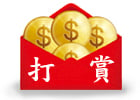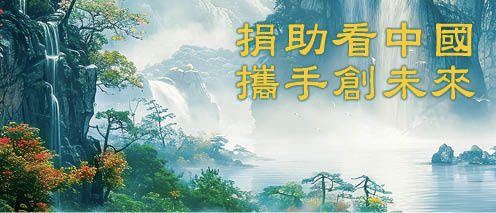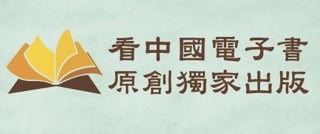「拉薩日新月異」——很多去過拉薩的人都會這麼說。那麼,我就以其中兩個地方為例,說說拉薩的新面貌吧。
一、江蘇路
如果我在拉薩,面朝東方站立的話,江蘇路就在我的右邊,像一柄刺刀斜斜地切入拉薩的右肋。
聯想到刺刀不是沒來由的,長長的江蘇路上最為重要的單位之一,正是早已盤踞半個世紀的西藏軍區,刺刀的寒光令平民百姓望而生畏,而我人生的最初四年,卻是在那裡面度過的,因為我是一個金珠瑪米(藏語,解放軍)的女兒,生於文革。在我父親那時候所拍的照片中,有一張是荷槍實彈的軍人在街上遊行。那天是個陽光燦爛的日子,陽光下,一片密密麻麻的刺刀比一旁稀疏的樹木更多,更像密集的叢林;然而,樹木不會如刺刀一般閃耀著令人心驚的寒光。那片閃耀著寒光的刺刀扛在一個個正舉著毛主席語錄本並高呼口號的年輕軍人肩上,雖然是黑白照片,但可以想像得到無數本紅色的小寶書與閃耀著寒光的刺刀所構成的是怎樣的一個情景,使得遠處的布達拉宮也自身難保。
如今,雖然這條街上雲集的有如同中國城市的各個組成部分,黨政機關、行政單位、學校醫院、報社工廠、旅館飯館,以及佔地廣闊、戒備森嚴的那個軍隊大院,但最有名的是它被叫做「電腦一條街」,可想而知有多少與電腦相關的店面——差點忘記,這裡曾經還被叫做「黨政軍妓一條街」,街道兩邊儘是一間間色情小屋,天一黑就閃爍著粉紅色的燈光,大概因為那樣的稱呼實在有損黨和政府的形象,色情小屋遂被電腦小店取代了。
我也曾抱著電腦去其中的某個店裡修過,還去刻錄過屬於「反動宣傳品」的電影和歌曲。有一部是好萊塢拍的故事片《西藏七年》,換了一個類似港臺槍戰片的火爆片名流入拉薩的影碟市場。說實話,影片中有些片斷漫畫化了,比如下巴上長著一顆痣、貌似或影射毛澤東的解放軍軍官,衝著年輕的達賴喇嘛一腳踐踏神聖的壇城模型,雖然中共的所作所為的確如此,但這樣過度藝術化的表現還是誇張了,顯然並不瞭解先禮後兵、先屈後伸、先恭後踞的中國文化。
江蘇路,這是一個猶如刺刀一般具有殺傷力的名字,但不太記得這條街是什麼時候與江蘇連接在一起的,大概有十多年了。瞭解「西藏問題」的人會知道這意味著拉薩的對口「援藏」地區是江蘇省。所謂「援藏」實質上就是類似諸侯割據,中國各省份將西藏自治區如切蛋糕似的分成無數塊,各自承包,趁著「西部大開發」以自肥爾。且欲蓋彌彰地,為了在當地永遠地刻下自己的豐功偉績,紛紛給建築物、街道等起名或改名,什麼廣州路、上海廣場、泰州廣場、山東大廈諸如此類,以飛快的速度覆蓋了西藏自治區的地圖。
對口「援藏」拉薩的,除了江蘇省還有北京市。不過早在文革之前,拉薩城裡就已經有了北京路,是從藏人口中的「德吉囊嘎」改過去的,原來的意思是幸福路。至於文革,更是改名成風,帕廓(環繞大昭寺的轉經路)改為立新大街、朵森格(石獅子)改為新華路、宇妥(綠松石屋頂)改為人民路等等。連山也被改了名字,夾波日(指藥王山)成了勝利峰。而法王之宮——羅布林卡被改為人民公園、布達拉宮差點被改為東方紅宮。顯而易見,拉薩已經陷入一大堆與自己的歷史、傳統和文化完全無關的新名詞之中,來自外地的「解放者」喧賓奪主地給這個與己無關的古城,建構了並不新穎且霸氣十足的革命地名學。
至於今天的更名或起名比文革時代更勝一籌,它乾脆是以中國各地的地名來命名圖伯特(西藏)的地標,不再是充滿意識形態含義的名字。根本上,這究竟是出於什麼目的或盤算呢?是為了讓原住民的藏人們從陌生的地名中感受到帝國的威力,在不得不習慣的過程中失去對本土的記憶與傳承,還是為了讓越來越多的移民生活在以他們故鄉的地名所構成的帝國版圖的想像之中?一個個中國各地的名字,為的是把圖伯特完全地「中國化」,讓圖伯特逐漸地消失在「中國」的符號之中,說到底,這完全是一種殖民行為。
原有的、本來的、屬於自己的地名被改變,真的是一件很可怕的事情,是一種抹煞記憶的陰謀,是一把割斷與過去聯繫的剪刀,是一夜之間就已面目全非的悲劇。每次從漢地回到拉薩,我好似不是回到藏人的地盤,而是穿梭於漢人的街道之中。那些路的名字大多是漢地的地名,那些商店的名字也基本是漢地商店的名字,迎面看見的、錯臂而過的、回頭瞥見的,都是再也熟悉不過的漢人的模樣,就像是我根本就沒有離開漢地一步,無論走多遠、多久,依然還被困在他牢牢攥住的手心裏。
二、太陽島
一直以來,我對拉薩城北的太陽島很有興趣。此乃整個拉薩最為光怪陸離的角落,堪稱今日拉薩的縮影,值得給那些去採訪的外媒記者或去旅遊的外族朋友隆重推薦。
從前這裡叫做「江瑪林卡」(長滿可以做掃帚的野草叢林),有樹木有沙灘有拉薩河靜靜流過,小橋的兩頭掛滿了重重經幡。它又被戲謔為「古瑪林卡」,意思是小偷藏身的園林。1994年,經由一位在西藏最具盛名的漢人畫家推介,來自澳門的開發商與當局合作,將這片野生園林改建成了賭場,之後有內地富豪接手改建成中和國際城,很快這裡成了拉薩最大的、最公開的紅燈區,雲集上千名妓女。
網上有篇關於拉薩性工作者的調查報告,稱在拉薩流傳這麼一句話:「沒錢的逛二環路,中產階級進天海夜市,高產階級拜太陽島」,並寫到:「在拉薩的二環路,三環路和四環路上散佈著無數的來自於四川、重慶、湖北、湖南的少女、少婦,甚至包括許多中年婦女,在整個拉薩形成了一道獨特的風景線……」[i]一個從深圳去拉薩的漢人嫖客得意洋洋地在網上介紹嫖娼心得:「中和國際城是拉薩真正的紅燈區,高中低檔的都有,尼泊爾的,俄羅斯的也有,國外的貴,還醜,建議支持國貨,中和國際城到底有多少小姐,沒數過,反正中和國際城方圓5公里最多的店子是賣肉的,哈哈。」[ii]
除此,太陽島還夾雜著各地風味的飯館、藏獒銷售中心(牆上掛著十世班禪喇嘛的巨幅照片,桌上擺著毛澤東的像框)、四顆星的大酒店(有西餐中餐藏餐和印度餐等)、出售性用品的眾多成人商店,以及拉薩民族文化藝術宮、拉薩市政府的臨時辦公室等等。
我曾去過一個叫做「人民公社」的飯館,裡面供毛澤東像,挂毛澤東語錄,服務員一律穿別著毛澤東像章的軍綠色服裝,幾分像紅衛兵,幾分像紅色革命電影裡的國民黨特工,幾分像妖怪。披挂一條潔白哈達的毛像兩邊,掛著一副對聯:「翻身不忘毛主席,致富不忘鄧小平」,據悉開飯館的老闆就來自鄧小平的家鄉,看來的確是富了他。
我還在「民族文化藝術宮」看過一場由官商聯手推出的歌舞劇《喜瑪拉雅》,演出人員基本上來自中國內地。表演的節目有雜技、魔術,夾雜著貌似印度舞、泰國舞、阿拉伯肚皮舞實則乃一場場色情意味的艷舞,還夾雜著青藏鐵路和火車、五星紅旗和奧運火炬,就差要求全場起立高唱中國國歌了。尤其惡俗的是,還讓一位自稱叫什麼卓瑪的「藏族少女」在台上招親,被邀上臺的男性漢人觀眾如果答應三個條件就可以當「古格國王」,如果不答應,「藏族少女」嬌滴滴地宣布:「就懲罰他磕長頭」。
這真是一句非常糟糕的台詞,一下子就讓這個自稱「領軍西藏文化」的歌舞劇露餡了。磕長頭意味著什麼?哪些人會以三步一個等身長頭的方式來丈量通往聖地拉薩的迢迢長路?難道他們都是遭到懲罰的人嗎?他們犯了什麼樣的罪過?對於藏人來說,磕長頭的人都是了不起的朝聖者,他們以折損肉體的苦行表達了極其虔誠的信仰之心,值得垂下頭顱向其致敬。然而,在這出充斥著藏文化符號的大雜燴裡,原本意味著無量功德的神聖行為卻被視為「懲罰」,這即便是玩笑,也太過分了。而真正的圖伯特,在這樣的玩笑中,分明是被貶低了,被辱沒了,被褻瀆了。
唯色(Woeser):全名茨仁唯色(Tsering Woeser)。藏人。出生於文化大革命中的拉薩。曾在西藏東部康地及中國漢地生活、學習二十年。1988年畢業於西南民族學院漢語文系,就職甘孜報社任記者兼編輯。1990年春天重返拉薩,至2004年6月,就職《西藏文學》雜誌社任編輯。2003年因在中國出版的散文集《西藏筆記》,被當局認為有「政治錯誤」而遭查禁,並被解除公職。現為獨立作家,著有詩集、散文集、故事集及口述歷史專集十本,合集三本,被翻譯為英文、德文、法文、西班牙文、加泰羅尼亞文、日文及藏文的譯著十本。並獲多個國際獎項。居北京、拉薩二地,自況為中國境內的流亡藏人。
The New Face of Lhasa
Tsering Woeser
「Every day there’s something new in Lhasa,」 many who have been to Lhasa will say. I would like to give two examples of the new face of Lhasa.
Jiangsu Road
If you are in Lhasa facing east, Jiangsu Road will be on your right, slicing at an angle through Lhasa’s right flank like a bayonet.
This association with a bayonet is not gratuitous. One of the most important places on the long Jiangsu Road is the Tibet Military District, entrenched there for half a century. The icy gleam of the bayonets was an unnerving sight for the ordinary citizens of Lhasa. I spent the first four years of my life in there. I am the daughter of a soldier in the 「jinzhumami」 (金珠瑪米), as we call the People’s Liberation Army, and was born during the Cultural Revolution. One of the pictures my father took at that time is of a group of heavily armed soldiers marching on the street. That was a sunny day, and in the sun was a field of densely packed bayonets, resembling a forest and outnumbering the scattering of trees on the side. Trees, however, do not glisten with the alarming icy gleam of a bayonet. The shining bayonets rested on the shoulders of the young soldiers as they held up Mao’s Little Red Book and chanted its slogans. Even though the photo is in black and white, one can picture the kind of scene that these countless Little Red Books and glittering bayonets created. Even the Potala Palace many miles away would be powerless to defend itself.
Today, Jiangsu Road is packed with the myriad things that make up your average Chinese city: Party offices, government buildings, administrative agencies, schools, hospitals, newspaper bureaus, factories, hotels, restaurants, and a heavily-guarded military district that occupies a huge swath of land. From its nickname, 「Computer Street,」 one can well imagine how many computer related stores there are here. I almost forgot—it was once called 「Party, Government, Military, and Prostitutes Street.」 Jiangsu Road used to be full of brothels, their pink lights flashing as soon as the sun went down. Perhaps because the name was damaging the Party and government’s image, the brothels were replaced with computer stores.
I, too, once took my computer to a shop there to be fixed, and have gone there to burn CDs of movies and songs that would be categorized as 「reactionary propaganda.」 One of them was the Hollywood film Seven Years in Tibet, which came into the Lhasa DVD market disguised as an action movie from Hong Kong or Taiwan. To be honest, some parts of the movie are cartoonish, like the PLA officer with a mole on his chin, an allusion to Mao Zedong, charging at a young Dalai Lama and running over a sacred sand mandala. Even though the Communist Party has done all the things depicted, the over-artistic presentation is still an exaggeration. They obviously did not understand the Chinese cultural values of diplomacy before force, submission before advance, and deference before conquest.
As a name, 「Jiangsu」 is lethal like a bayonet, yet I do not remember quite when the street became associated with Jiangsu Province—probably more than 10 years ago. Those who know about the 「Tibetan problem」 know that the street name indicates that Jiangsu Province is a designated provider of 「Tibetan aid」 to Lhasa. In reality, providing 「Tibetan aid」 is a way for provinces to mark their territory. Various Chinese provinces have divided Tibet like a cake into numerous pieces, with each province taking on a piece in order to enrich itself in the Western Development Plan. To permanently mark their glorious achievements in the region, these provinces assigned names to buildings and streets, or changed their names. Names such as Guangzhou Street, Shanghai Plaza, Taizhou Plaza, and Shandong Building quickly covered the map of the Tibetan Autonomous Region.
In addition to Jiangsu Province, Beijing is also a designated provider of 「aid to Lhasa,」 although Lhasa had a 「Beijing Road」 even before the Cultural Revolution. It replaced the road’s original Tibetan name 「dejinanga 德吉囊嘎」 (Happiness Road). Name changing became common practice during the Cultural Revolution: 「Pakuo 帕廓」 (the road leading to Jokhang Temple) became Lixin Avenue, 「Duosenge 朵森格」 (stone lion) became Xinhua Road, 「Yutuo 宇妥」 (Turquoise Roof) became People’s Road, etc. Even the mountains have new names: 「Jiabori 夾波日」 (Bhaisajyaguru Mountain) became Mount Victory. And His Holiness’ summer palace, Norbulingka, became People’s Garden, and Potala Palace was almost renamed the East is Red Palace. As one can see, Lhasa is submerged in a pile of new names that have nothing to do with its history, tradition, or culture. The outsider 「liberators,」 came and took over the old city of Tibet that had nothing to do with them, and have constructed a logic for reassigning revolutionary names that is unoriginal and completely domineering.
Nowadays, the naming and name-changing scheme is more aggressive than that during the Cultural Revolution. Instead of using names with ideological connotations, they simply started giving names of various places in China to the landmarks of Tibet. And what is their motive or goal? Is it to make the indigenous Tibetans feel the might of the empire through these unfamiliar names, and lose the memories and heritage of their native land in the course of becoming accustomed to them?
Or is it to enable the ever greater number of migrants to live in the imagined empire that is made up of the names of their hometowns? Every name taken from a part of China is an attempt to further Sinify Tibet, to let Tibet gradually disappear into the signs of China. All said, this is entirely an act of colonialism.
To have the original, existing geographical names that belong to you changed is a very terrifying thing. It is a conspiracy to obliterate memories, a pair of scissors that severs your connections to the past, a tragedy of overnight change beyond recognition. Every time I return to Lhasa from Han China, it feels like I am not returning to the territory of the Tibetans, but running back and forth through the streets of Han people. Most of the street names are names of places in Han China, and the shop names are basically names of shops in Han China. The people I see before me and bump into, and those I catch a glimpse of behind me, are all Han Chinese who could not be more familiar to me. It is as if I have never left Han China, as if I am trapped in its palms no matter how long or how far I travel.
Sun Island
I have always been quite interested in Sun Island, which is in north Lhasa. Sun Island is the most bizarre nook in Lhasa, and can be seen as a miniature of Lhasa today. I highly recommend it to tourists and foreign press doing reporting in the region.
Sun Island was once called 「Jiangmalinka 江瑪林卡」 (a forest thick with reeds that could be used to make brooms). There are trees and sandy beaches, and the Lhasa River flows by serenely. Tibetan prayer flags hang on both ends of footbridges. Locals jokingly called the place 「Gumalinka 古瑪林卡」—a forest hideout for thieves. In 1994, on the recommendation of the most renowned Han painter in Tibet, a developer from Macau worked with the Lhasa government to transform this wild field into a casino. Afterwards, a Chinese magnate took over and built Zhonghe International Town, which quickly became Lhasa’s biggest and most public red light district, with as many as a thousand prostitutes.
A popular local saying cited by an online investigative report on sex workers in Lhasa goes, 「The poor go to the Second Ring Road, the middle class to Tianhai Night Market, and the rich to Sun Island.」 The report went on to say, 「Countless numbers of young women from Sichuan, Chongqing, Hubei, and Hunan walk Lhasa’s Second, Third, and Fourth Ring Roads, as do a number of middle-aged women, forming a unique landscape in Lhasa.」[1] A Shenzhen frequenter of Lhasa brothels gleefully shared his whoring knowledge online, 「Zhonghe International City is the real red-light district of Lhasa—there are high school and low class girls, Nepali girls, Russians. The foreigners are expensive and ugly. I suggest you support domestic merchandise. I don’t know how many girls there are in Zhonghe International City—I have never counted them. Anyway, most of the shops within a five-kilometer radius of Zhonghe International City are in the flesh trade, haha.」[2]
In Sun Island there are restaurants selling various regional delicacies, shops selling Tibetan Mastiffs (it has a huge photo of the 10th Panchen Lama on the wall, and a framed photo of Mao Zedong on the table), four-star hotels with Chinese, Tibetan, and Indian restaurants, sex shops, Lhasa People’s Culture and Art Museum, and temporary offices of the Lhasa municipal government.
I once went to a restaurant called 「People’s Commune」 that had portraits of Mao Zedong and his slogans hanging on the wall. The servers all wore green army garb with Mao buttons. They looked like part Red Guard, part Kuomintang special agents in Cultural Revolution era propaganda films, and part monster. A couplet hung on the wall on both sides of a Mao portrait draped in a spotless white Tibetan ceremonial scarf that said: 「Don’t forget Chairman Mao when your fortune changes; don’t forget Deng Xiaoping when you get rich.」 I have been told that the owner of the restaurant is from Deng Xiaoping’s hometown. He must have gotten rich.
I also saw a performance of the musical Himalaya at the Lhasa People’s Culture and Art Museum, which was a joint government-business venture. The performers were mostly from mainland China. The acts included acrobatics and magic mixed in with burlesque that looked like Indian dance, Thai dance, and Arabic belly dance. Also mixed in were the Qinghai-Tibet railway, Chinese flag, and Olympic torch. The only thing missing was a request that the whole audience stand up and sing the Chinese national anthem. Especially vulgar was when they asked a 「Tibetan girl」 named Something Dolma to the stage to find a husband. If the Han Chinese man from the audience invited to the stage agreed to three conditions, he would become the 「King of Guge.」[3] If not, the 「Tibetan girl」 would put on a saccharinely sweet voice and proclaim, 「He must kowtow in punishment!」
That line was truly awful. It instantly gave away the real point of the musical that proclaims itself to be 「representing Tibetan culture.」 What was the significance of the kowtowing? What kind of people would make pilgrimages to Lhasa kneeling and kowtowing every three steps during their long journeys? Are they all being punished? What crime did they commit? To Tibetans, those who kowtow are remarkable pilgrims. They hurt themselves physically to express their extraordinary faith, and they deserve our bows in tribute. For this hodgepodge of Tibetan cultural symbols to portray something that is originally a sacred act of immeasurable virtue as 「punishment」—even as a joke, is going too far. In this joke, the real Tibet is clearly being degraded, dishonored, and desecrated.
English translation by Human Rights in China.
Tsering Woeser, also known as Woeser, is a Tibetan born in Lhasa during the Cultural Revolution. She has lived and studied in Kham, eastern Tibet, and other places in China. After graduating from the Chinese language and literature department of the Southwest University for Nationalities in 1988, she worked as a reporter and editor for a newspaper in Kardzé (Ganzi). She returned to Lhasa in spring 1990 to work as an editor for the Tibet Literature magazine. In 2003, the authorities banned a collection of her essays, Notes on Tibet, for "political errors"; she was dismissed from her position in June 2004. She writes in Chinese and is the author of 10 books, including collections of poems, essays, stories and oral histories, and her works have been collected in three other volumes. Her books have been translated into English, German, French, Spanish, Catalan, Japanese and Tibetan. She is the recipient of many international awards. She currently lives in both Beijing and Lhasa, and considers herself a Tibetan exiled in China.
Notes
[1] 「Yi ge xing gongzuozhe diaocha ziliao,」 Dongfang Shehui Luntan, January 3, 2010, http://eastsw.5d6d.net/thread-22264-1-1.html
[2] 「Zhongguo xiaojie cong Lasa fa gei laojia de diaobao: Ren sha, qiao duo, su lai! ZT,」 Public BBS, http://www.publicbbs.com/BBSdetail.aspx?id=10728.
[3] Translator’s Note: Guge is an ancient kingdom of west Tibet.
(文章僅代表作者個人立場和觀點)
看完那這篇文章覺得


























排序